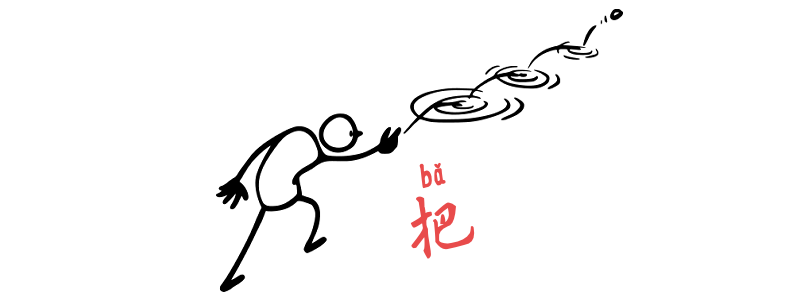What is a Direction Complement?
A direction complement describes where an action moves. Especially movement toward or away from something. Common examples include:
- 来 (lái) – come
- 去 (qù) – go
- 上 (shàng) – up
- 下 (xià) – down
- 进 (jìn) – enter
- 出 (chū) – exit
- 回 (huí) – return
- 过 (guò) – cross / pass
These can be combined:
- 走进去 (zǒu jìn qù) – walk in
- 拿出来 (ná chū lái) – take out (toward the speaker)
- 搬回去 (bān huí qù) – move back (away from the speaker)
What is 把 bǎ?
把 is a grammatical structure used to emphasize how an object is handled or affected by an action.
Structure
把 + (neg- or adv.) + object + verb phrase
When you use direction complements with 把, the structure becomes:
把 + (neg- or adv.) + object + verb + direction complement
把垃圾拿出去把垃圾拿出去
Take out the trash.
把鞋子放進鞋櫃裡把鞋子放进鞋柜里
Put the shoes into the shoe cabinet.
別把手機從包包裡拿出來别把手机从包包里拿出来
Don’t take the phone out of your bag.
我可以把貓帶回家嗎?我可以把猫带回家吗?
Can I take the cat home?
請把水杯拿過來給我请把水杯拿过来给我
Please bring the cup of water over to me.
孩子把褲子脫下來孩子把裤子脱下来
The child took off his pants.
把錢全部拿出來把钱全部拿出来
Take out all the money.
Why use 把 bǎ?
The short answer: it’s about emphasizing the object.
Unlike English, Chinese usually puts the most important information at the beginning of a sentence. That’s why time and people often come first.
But what if you want to highlight a particular object. Something really important? Simple: move it to the front! Doing that shifts it from just “an object” to the object — the focus of the sentence.
The verb stays at the end, which makes it easy to add extra details or explanations afterward. These extra parts are what we call complements in Chinese grammar.


